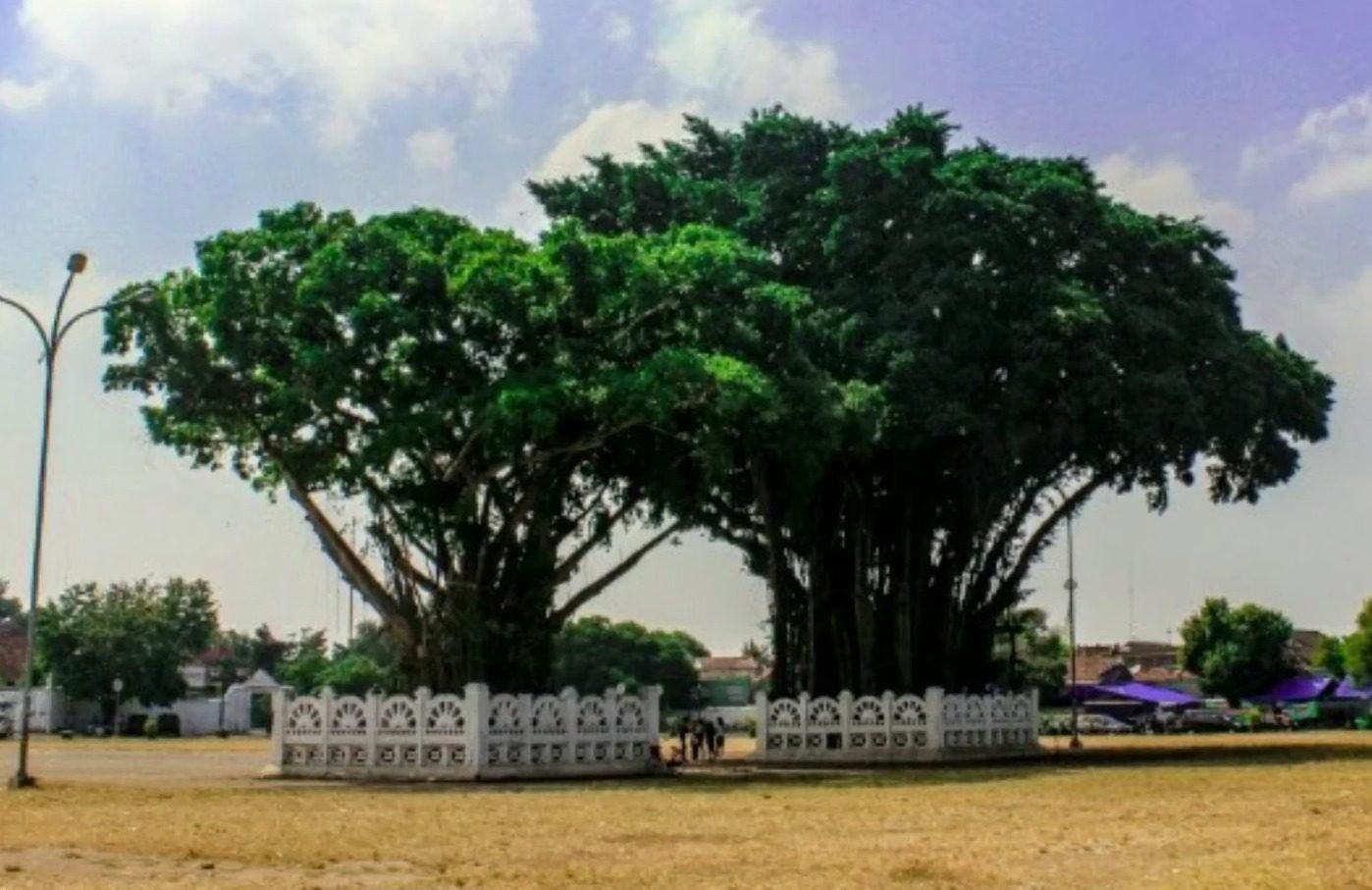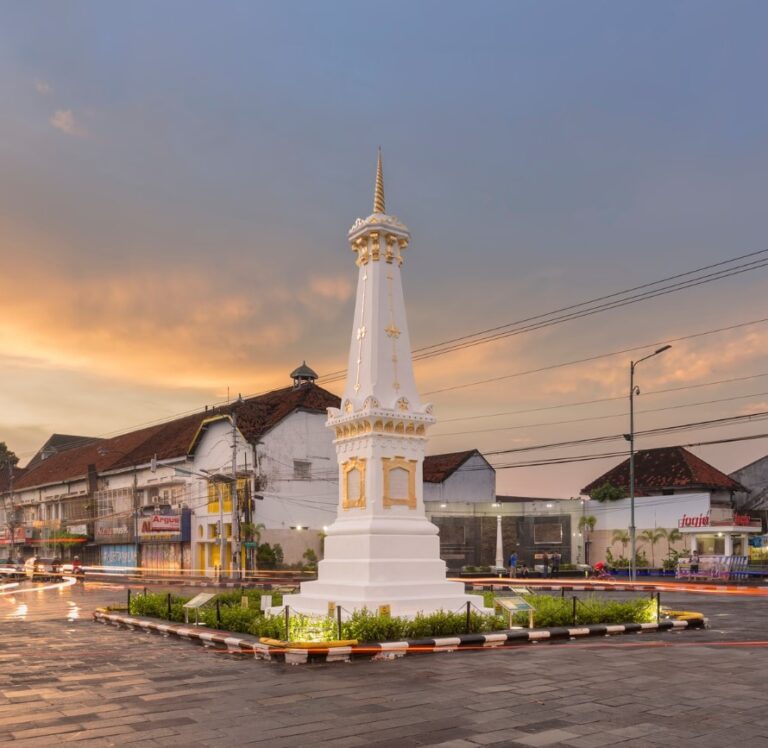There is something mythology of alun-alun kidul yogyakarta have to know. Alun-Alun Kidul Yogyakarta, or what is often called Alkid, is one of the iconic places in Yogyakarta which is full of history and myth. Alkid is not only the center of local community activities, but also attracts the attention of tourists from various regions. The uniqueness and attraction of Alkid lies in the presence of two twin banyan trees which hold many legendary stories.
Every corner of Alkid seems to tell stories from the past, which are still believed today and are part of Yogyakarta’s rich culture and full of mystical nuances. Then, what about mythology of alun-alun kidul yogyakarta?
This article summarizes several things that are considered myths behind the banyan tree in Alun-alun Kidul Yogyakarta. Reported from various sources, here are four legendary myths about Alun-Alun Kidul.
Read More: Abang Temple History, A Ruined Temple with Full of History
1. Banyan Twins and the Wedding of HB I’s Daughter
One of the most famous myths among the people of Yogyakarta is about the twin banyan trees in Alun-Alun Kidul, which is associated with the daughter of Sultan Hamengkubowono I (HB I). The story begins with the princess being proposed to by a man she doesn’t like. To avoid the marriage, the princess devised a difficult condition: the man had to walk blindfolded from the north pavilion, past the twin banyan trees, to the south pavilion. This task was meant to be nearly impossible, serving as a test of the man’s purity and sincerity.
The man, as anticipated by the princess, failed to fulfill these requirements. He stumbled and veered off course, unable to navigate the path with his eyes covered. Sultan HB I then declared that only young people with clean and sincere hearts could successfully pass through the twin banyans. This proclamation turned the challenge into a legend, suggesting that purity of heart was necessary to achieve such a feat. The story spread, and many believed that the twin banyan trees held mystical powers that revealed the true nature of a person’s heart.
Finally, a young man from Siliwangi accepted the challenge and succeeded in walking the path blindfolded, demonstrating his pure and sincere heart. He subsequently married the Sultan’s daughter, fulfilling the myth’s romantic and moral dimensions. This tale has become a beloved legend in Yogyakarta, symbolizing the triumph of genuine virtue over superficial intentions. It continues to attract locals and tourists alike, who are eager to test their own hearts and perhaps glimpse a bit of the old magic that once brought two souls together.
2. Twin Banyans as the Gateway to the South Sea
Another myth that developed during the time of Sultan Hamengkubowono VI was that Alun-Alun Kidul was the door to the South Sea. According to belief, the Yogyakarta Palace has a special relationship with the Queen of the South, Nyi Roro Kidul. This myth states that people who commit crimes against the palace will lose their supernatural powers after passing the twin banyans in Alun-Alun Kidul. The myth reflects the deep-rooted spiritual connection between the palace and the mystical forces believed to reside in the South Sea, underscoring the sacredness of the palace and its surrounding areas.
This belief adds to the mystical and sacred aura of the twin banyan, making it not just an ordinary tree, but a spiritual gate that connects the human world with the mystical world of the South Seas. The twin banyans are seen as sentinels that guard this gate, filtering those who pass through based on the purity of their intentions and actions. Those who harbor ill intentions towards the palace or its inhabitants are believed to be stripped of their supernatural abilities, ensuring that only those with honorable hearts can navigate the sacred space unscathed.
This legend enhances the allure of Alun-Alun Kidul, attracting not only the devout and the curious but also those seeking a deeper connection to the spiritual heritage of Yogyakarta. The twin banyan trees stand as silent witnesses to the palace’s sacred relationship with Nyi Roro Kidul, symbolizing the intertwining of human and supernatural realms. Visitors to Alun-Alun Kidul often feel the weight of this mystical history, experiencing a sense of reverence as they walk through the area, aware of the powerful forces that legends say still linger there.
3. Concentration Training Place for Palace Soldier
In ancient times, Alun-Alun Kidul was used as a training ground for palace soldiers. They practiced various skills crucial for their roles, including horse riding and archery while sitting cross-legged, showcasing their precision and control. One of the most formidable exercises was tiger fighting, known as “tiger raiding,” which required exceptional bravery and combat skills. These rigorous training activities were designed to prepare the soldiers for any challenges they might face in their service to the Sultan and the palace.
Apart from these physical and combat skills, soldiers also practiced concentration and mental fortitude through a unique tradition called ‘masangin’. In this exercise, soldiers would attempt to walk straight from one banyan tree to another with their eyes closed. This seemingly simple task was in fact a test of their ability to remain calm, focused, and maintain a clear sense of direction despite being deprived of their sight. Masangin required the soldiers to rely on their inner senses and trust their instincts, reflecting the importance of mental clarity and determination.
This exercise aimed to train the soldiers to be calm and focused, so that they could carry out their duties well without being distracted by things around them. The ability to maintain concentration under pressure was crucial for palace soldiers, who often had to perform their duties in high-stress situations. By practicing masangin, they developed the mental resilience needed to stay composed and effective, whether they were in battle, on guard duty, or serving in the palace.
Masangin then became a tradition that continues to be preserved until now. Over time, this practice transcended its original military purpose and evolved into a cultural ritual embraced by the broader community. People began to participate in masangin not only as a test of their concentration but also as a symbolic act of seeking clarity and purity of heart. The tradition has been passed down through generations, maintaining its significance and charm in contemporary Yogyakarta.
Today, masangin is a popular activity among locals and tourists alike. Every evening, especially during special occasions, the Alun-Alun Kidul is filled with people eager to try walking between the banyan trees with their eyes closed. This practice has become a unique attraction, drawing visitors who are curious about the legend and eager to test their own concentration and inner peace. The enduring popularity of masangin highlights the deep cultural roots and the lasting impact of ancient traditions in modern-day Yogyakarta, connecting the present with the rich heritage of the past.
4. Granting wishes or requests
Masangin, the tradition of walking straight with closed eyes past the twin banyan trees, is now embraced not only by palace soldiers but also by the general public and tourists. This tradition, steeped in history and mysticism, has evolved into a popular cultural activity. Every night 1 Suro, following the topo bisu ritual, many people gather at Alun-Alun Kidul to perform masangin, hoping that their hajat or wishes will come true. This ritual has become a symbolic act of seeking clarity, focus, and a pure heart, extending its significance beyond its original military purpose.
According to a circulating myth, if someone manages to pass the twin banyan trees with their eyes closed, their wish will come true. This enchanting belief makes Alun-Alun Kidul an attractive destination for tourists and locals alike, who are eager to try their luck and experience the mystical aura of the twin banyans. The allure of having one’s deepest desires fulfilled adds a layer of magic to the tradition, drawing visitors to the historic square. As people attempt the masangin walk, they not only partake in a cultural ritual but also connect with the ancient legends that have shaped the identity of Yogyakarta, ensuring that the mystical charm of Alun-Alun Kidul continues to captivate hearts and minds.
Alun-Alun Kidul Yogyakarta with its twin banyans is not only a beautiful tourist spot, but also holds various myths and stories that add to the richness of Yogyakarta’s culture. These myths, both related to royal history and spiritual beliefs, make Alun-Alun Kidul a place full of charm and mystery.
For those of you who are looking for a Jogja tourism agent, visit Yogyakarta Tour. With a variety of facilities available, Yogyakarta Tour is ready to accompany you to explore the culture, history and natural beauty of the city of Jogja.
Read More: Enjoying The Indonesian Biggest Waterpark of Jogja Bay







